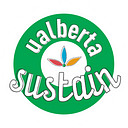Getting citizens involved is key to protecting biodiversity
“If we take for granted the things that our environment does for us — cleaner air, cleaner water, better soil for growing things — those are the things that we’re going to have to spend money on to reproduce.”
Jenna Bell | Dec. 10, 2019
Biodiversity loss is a major issue worldwide. The UN estimates that close to one million plant and animal species are currently near extinction, more than ever before in human history. Our natural heritage allows us to develop and thrive — however, our rapidly growing demand on the earth’s resources is harming the very thing which we rely on.
Solutions to this issue may seem daunting when thinking about biodiversity loss on a global scale. What if we start with protecting the wildlife just within our own city?
University of Alberta law professor Cameron Jefferies and the Alberta Land Institute’s Erin Sawyer have been working on a report describing the ways Alberta municipalities can have a major impact on conserving biodiversity. I spoke with Cameron Jefferies last month, with a year and a half of hard work behind him and the report finally finished.
How did you first become interested in this topic?
This evolved naturally from a desire to do more work of local impact. Most of my work is at the international level — dealing with issues like climate change, biodiversity or oceans management. I was exploring opportunities to get more involved in work at the local level and make more immediate change.
Why is this report significant?
I think that this is the most comprehensive analysis of municipal biodiversity conservation that’s out there in Canada right now. There hasn’t been something like this undertaken in Alberta — to the extent that this looks beyond just regulatory options, and then also considers things like financial obligations and citizen engagement.
The report started with the idea that we could work with the principle of subsidiarity to achieve more effective local biodiversity or conservation action — subsidiarity is the idea that regulation can occur and should occur locally. In this sense, you can have regulation and responses that are better tailored to a community’s needs. Subsidiarity has been talked about a little bit by our courts over the last decade, but it hasn’t really rooted itself in Canadian law, necessarily. So we thought this would be a good chance to look at that principle, in view of the recent amendments to the Municipal Government Act.
Why haven’t cities in Alberta been more effective at protecting biodiversity?
Edmonton, Calgary, and smaller municipalities have a whole suite of [conservation] policies already. We were struck by the fact that even though there is all this policy on the books, there’s still concrete action that needs to be taken. We realize that there probably isn’t one single action that would really solve the problem. But rather it’s getting citizens involved, looking at financial constraints, making sure that the environment is taken into account during decision making processes to try and drive it forward. It’s more of an integrated kind of response.
Why is Edmonton an important place for biodiversity?
It’s not a coincidence that we’re sitting here in a place like Edmonton. This is a very rich area for biodiversity along the river — a beautiful landscape that is suitable for a variety of life. And that’s why we live here. That’s why there was settlement here. That’s why people have been using this area for thousands of years. And so it’s important that we are able to continue to benefit from those aspects of our environment.
So the report is finally finished — yay! What are your next steps?
The immediate next step is trying to get some awareness for it and to get it out there. We have a couple other deliverables that we’re hopefully going to share as well. We’re going to offer a course down on Augustana Campus for municipal officials to learn about different ways that diversity could be accounted for in their municipalities. We’re also creating a brochure, hopefully that we can disseminate to landowners during real estate transactions. From this they can get a sense of how to connect their property to municipal conservation initiatives. We are hoping to get involved at the individual level or the family level and persuade or influence some of the decisions that are happening in municipalities across Alberta.
Read the report at https://www.albertalandinstitute.ca/public/download/files/103303
This interview has been edited for clarity and length.
